The Importance of Core Strength: Taking Back Your Posture
- Updated - March 16, 2025
Your core musculature is more than just your abs. It’s your body’s center of balance and strength. A stable, well-conditioned core supports your spine, aligns your posture, and empowers all movement. Without it, even simple daily activities like standing, walking, or bending can become challenging, leading to pain, stiffness, and reduced mobility. By improving core strength, you can regain control of your posture, move confidently, and prevent discomfort.
What is the Core, and Why is it Important?
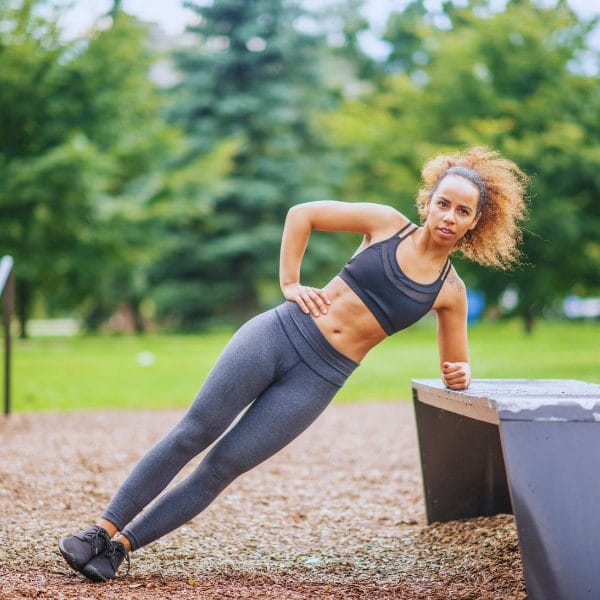
Your core is not just a set of muscles; it’s a dynamic system composed of multiple muscle groups that work together to stabilize your spine, pelvis, and ribcage. When these areas are accurately aligned, your body can function efficiently, reducing unnecessary strain on your back, shoulders, and hips. However, when your core is weak, your body compensates with poor movement patterns, often resulting in slouched shoulders, an arched lower back, or a forward head posture. Over time, these imbalances contribute to chronic pain and postural dysfunction.
Breakdown of Core Muscles:
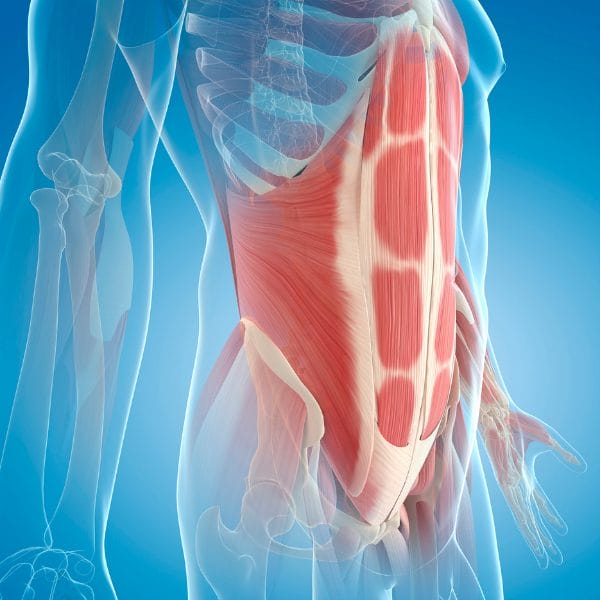
The core is made up of several key muscle groups that contribute to postural control and stability:
- Deep Core Muscles (Intrinsic Stability System)
- Transversus Abdominis (TVA) – The deepest abdominal muscle, wrapping around the torso like a corset, providing spinal and pelvic stability.
- Multifidus – A deep spinal muscle that runs along the vertebrae, helping to stabilize the spine and prevent excessive movement.
- Diaphragm – Assists with breathing and core stabilization, crucial in maintaining intra-abdominal pressure.
- Pelvic Floor Muscles – Provide support to the lower core and help regulate pelvic stability and posture.
- Superficial Core Muscles (Global Movement System)
- Rectus Abdominis – Commonly known as the “six-pack” muscle, responsible for spinal flexion and maintaining trunk stability.
- External and Internal Obliques – Located on the sides of the abdomen, these muscles assist in rotational movements, side bending, and stabilization.
- Erector Spinae – A group of muscles running along the spine, supporting upright posture and spinal extension.
- Quadratus Lumborum (QL) – A deep back muscle that connects the pelvis to the spine, essential for lateral stability and lower back support.
- Supporting Muscles for Core Functionality
- Gluteus Muscles (Gluteus Maximus, Medius, and Minimus) – Play a key role in stabilizing the pelvis and supporting lower back function.
- Hip Flexors (Psoas and Iliacus) – Connect the spine to the legs, helping with hip stability and movement.
- Latissimus Dorsi – Though primarily a back muscle, it connects to the core and assists in spinal support and movement coordination.
A properly functioning core requires a balance between these muscle groups. If any of these muscles are weak or inactive, the body compensates, leading to poor posture and potential pain or dysfunction.
Discover a practitioner near you.
Looking for a practitioner near you? Our extensive network of qualified professionals is here to help you.
Why Your Core Matters for Posture

Your core is not just a set of muscles; it’s a dynamic system that stabilizes your spine, pelvis, and ribcage. Core strength training is essential for improving posture, as it helps align these areas and enhances stability. When these areas are aligned, your body can function efficiently, reducing unnecessary strain on your back, shoulders, and hips. However, when your core is weak, your body compensates with poor movement patterns, often resulting in slouched shoulders, an arched lower back, or a forward head posture. Over time, these imbalances contribute to chronic pain and postural dysfunction.
Core Strength Role in Core Stability:
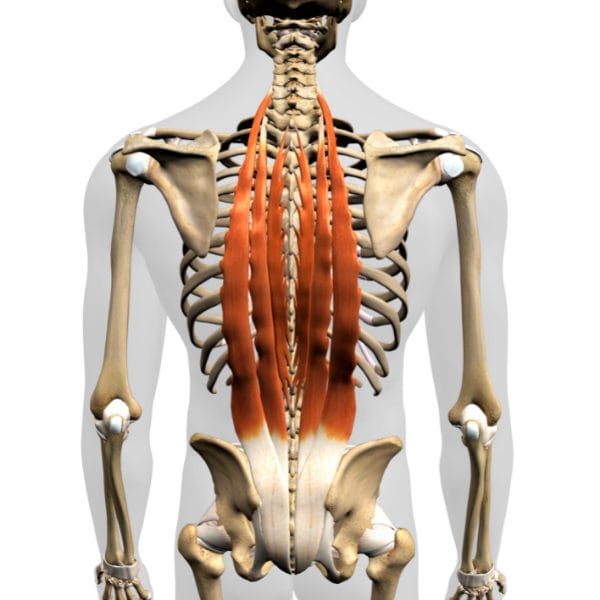
Your core acts as the stabilizing center for your entire body, ensuring proper alignment and reducing strain on surrounding muscles and joints. Maintaining core stability is crucial for reducing strain and preventing injuries, as it supports efficient movement and daily activities. Without sufficient core strength, the spine can become misaligned, leading to chronic pain and movement limitations. A strong core provides the following benefits:
Supports the spine and reduces strain on the lower back – The deep core muscles, including the transverse abdominis and multifidus, help maintain spinal integrity and reduce excessive pressure on the lumbar region.
Promotes upright posture, preventing slouching or excessive arching – Weak core muscles can cause the pelvis to tilt forward or backward, affecting spinal alignment. Strengthening these muscles encourages an upright stance and reduces postural fatigue.
Enhances balance and coordination in movement – Core stability ensures that every movement, from walking to running and lifting, is controlled and balanced. This reduces the risk of falls and improves overall body mechanics.
Protects against injuries caused by improper alignment – When the core is weak, other muscles compensate, leading to overuse injuries. A strong core helps evenly distribute forces, minimizing the risk of strain or injury.
Improves overall body mechanics for daily tasks and athletic performance – Whether performing household chores, exercising, or playing sports, a stable core allows for smoother, more efficient movement, enhancing both endurance and strength.
Signs of a Weak Core and Poor Posture
How do you know if your core is weak and affecting your posture? Some common signs include:
Lower back pain – A weak core forces the lower back to overcompensate, leading to discomfort and stiffness. This often occurs due to poor abdominal engagement, causing excessive spinal compression and muscle fatigue.
Forward head posture – Weak abdominal muscles often cause the spine to collapse, pushing the head forward as the upper back rounds. This misalignment places strain on the neck and shoulders, leading to tension headaches and discomfort.
Rounded shoulders – Without a strong core, the shoulders tend to roll forward, leading to tightness in the upper back and increased pressure on the thoracic spine. Over time, this posture can reduce lung capacity and cause discomfort in daily activities.
Pelvic misalignment – Poor core stability can cause anterior pelvic tilt, where the lower back excessively arches, or posterior pelvic tilt, where the pelvis tucks under. These misalignments can lead to hip instability, lower back strain, and reduced mobility.
Balance issues – The core controls stability, and weakness here can make it harder to maintain good balance. This may manifest as difficulty standing on one leg, frequent stumbles, or instability during basic movements like walking or climbing stairs.
Fatigue and postural strain – A weak core makes maintaining proper posture for extended periods difficult, leading to early fatigue while sitting or standing. This results in slouching, discomfort, and reduced energy levels throughout the day.
If you experience any of these issues, it may be time to focus on strengthening your core to reclaim proper posture and movement. Older adults, in particular, face an increased risk of falls and injuries due to lower core stability, making core strengthening exercises crucial for mitigating this risk.
The Best Core Exercises for Better Posture
While many people associate core workouts with crunches, true core training involves engaging the deeper muscles that stabilize the spine. A core exercise can be performed without any special equipment and involves movements that engage the abdominal and back muscles in a coordinated manner. The following exercises help develop a strong, stable core for optimal posture:
- Plank
- Engages the entire core, reinforcing neutral spinal alignment.
- It helps prevent lower back sagging and forward head posture.
- Keeping your knees bent slightly can help maintain proper form and reduce the risk of injury during the plank exercise.
- Bird Dog
- Improves core stability and coordination between the deep abdominal muscles and back.
- Encourages better control of spinal alignment.
- Dead Bug
- Strengthens the core while maintaining a neutral spine, contributing to overall core strengthening.
- Reduces excessive curvature in the lower back.
- Side Plank
- It targets the obliques and prevents lateral instability in posture.
- In physical therapy, the side plank improves stability, posture, and overall functional movement.
- It helps keep the spine upright and aligned.
- Glute Bridge
- Strengthens the lower core and glutes, correcting anterior pelvic tilt.
- Helps maintain a strong foundation for the spine and develop strong core muscles, which are essential for better performance in various physical activities and for reducing the risk of injuries.
Incorporating these exercises into your routine can reinforce postural alignment and reduce strain on your body.
Core Training Techniques
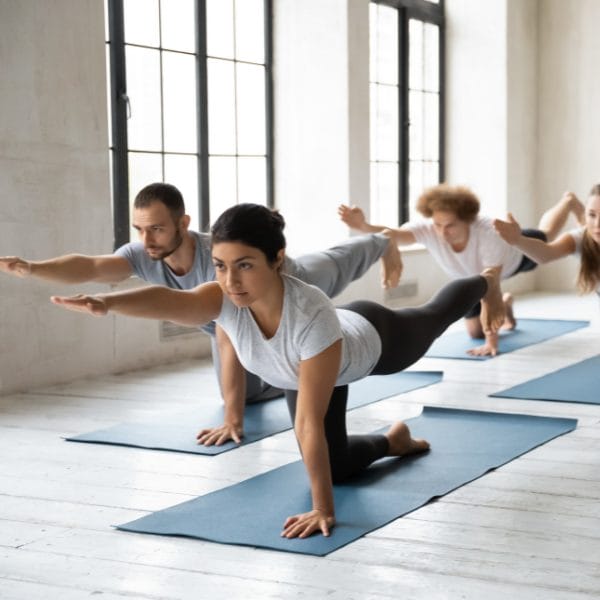
Core training involves various techniques targeting the core muscles, including strength training, flexibility exercises, and functional movements. Core exercises can be done with or without equipment and can be modified to suit different fitness levels. Some common core training techniques include planks, leg raises, and Russian twists. It’s essential to incorporate a variety of exercises into your core training routine to ensure that all the core muscles are targeted.
How Core Strength Training Reduces Pain and Stiffness
Core strengthening alleviates common sources of pain and stiffness by providing structural support to the spine and surrounding muscles. Here’s how:
- Lower back pain relief – A strong core stabilizes the lumbar spine, reducing stress on the lower back.
- Neck and shoulder tension reduction – Proper core activation encourages an upright posture, preventing tension buildup in the neck and shoulders.
- Hip and pelvic alignment – Strengthening the core helps prevent pelvic misalignment, which can lead to hip discomfort and imbalance.
- Improved breathing and circulation – A stable core allows for better diaphragm function, aiding deep breathing and circulation.
However, these approaches to fitness and wellbeing can improve your core:
PILATES

YOGA
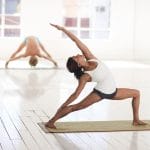
Improving Balance and Physical Activities
A strong core is essential for improving balance and physical activities. Core exercises can help improve balance by strengthening the muscles that control movement and stability. This can reduce the risk of falls and injuries and improve overall athletic performance. A strong core can also improve physical activities such as running, cycling, and swimming by providing a stable base for movement. Core exercises can also improve flexibility and range of motion, making it easier to perform daily activities.
Tips for Incorporating Core Exercises into Your Routine
Incorporating core exercises into your routine can be easy and effective. Here are some tips to get you started:
- Start with simple exercises such as planks and dead bugs, and gradually increase the difficulty as you get stronger.
- Incorporate core exercises into your daily routine during commercial breaks while watching TV.
- Use a combination of equipment, such as resistance bands and exercise balls, to add variety to your core exercises.
- Focus on proper form and technique to avoid injury and get the most out of your core exercises.
- Incorporate core exercises into your strength training routine, such as doing squats and lunges, with a focus on engaging the core muscles.
Common Mistakes to Avoid When Training Your Core
When training your core, it’s essential to avoid common mistakes that can lead to injury or ineffective exercises. Here are some common mistakes to avoid:
- Not engaging the core muscles correctly can lead to poor form and ineffective exercises.
- Too much weight or resistance can strain the core muscles unnecessarily and lead to injury.
- Not incorporating a mixture of exercises into your core training routine can lead to imbalances and weaknesses in the core muscles.
- Not focusing on proper form and technique can lead to injury and ineffective exercises.
- Not incorporating core exercises into your strength training routine can lead to weaknesses and imbalances in the core muscles.
The Bigger Picture: Core Strength and Daily Life
Posture isn’t just about standing tall—it affects every movement you make. The strength of your upper body plays a crucial role in daily activities, contributing to better balance, coordination, and injury prevention. From lifting groceries to sitting at your desk, your core determines how efficiently and comfortably you move. By prioritizing core stability, you can:
- Sit comfortably for long periods without slouching.
- Walk and run with better balance and endurance.
- Reduce strain when lifting, bending, or twisting.
- Enhance performance in sports and physical activities.
Take Back Your Posture Today
Your core is the foundation of your posture, movement, and overall well-being. Core strength training is essential as it improves exercise form, prevents chronic pain, and enhances flexibility. By incorporating targeted core exercises, improving awareness of your posture, and making small adjustments to your daily habits, you can build a strong, pain-free body. Whether you’re an athlete or someone who spends hours at a desk, taking care of your core is a lifelong investment in your health.
PLEASE NOTE
PostureGeek.com does not provide medical advice. This information is for educational purposes only and is not intended to be a substitute for professional medical attention. The information provided should not replace the advice and expertise of an accredited health care provider. Any inquiry into your care and any potential impact on your health and wellbeing should be directed to your health care provider. All information is for educational purposes only and is not intended to be a substitute for professional medical care or treatment.
About the author
Find Expert Posture Practitioner Near You
Discover our Posture Focused Practitioner Directory, tailored to connect you with local experts committed to Improving Balance, Reducing Pain, and Enhancing Mobility.

